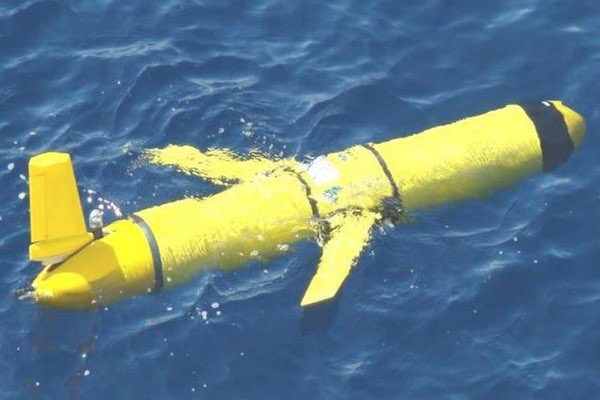How China’s seizure of a naval drone could set a precedent for nabbing a satellite in orbitby David D. Chen
|
| China demonstrating its willingness to assert itself in contested domains, using tools it has developed for peaceful uses, means its assets in orbit must receive renewed scrutiny. |
Lessons that China learns in one domain tend to find their way into others. In June 2016, China launched Aolong-1, the first of a planned series of satellites equipped with a robotic manipulator, purportedly for the purpose of capturing and de-orbiting space debris. The People’s Liberation Army (PLA) Navy destroyer that picked up the UUV in the South China Sea is tasked with and equipped for submarine recovery operations, a similarly benign mission with apparent dual-use utility. Being robotic, the UUV made for an easier, less risky, target. China learned quickly after the EP-3 incident that holding US personnel hostage for however long a period had a highly escalatory effect and was a public relations liability. A drone, though, is simply hardware, sending the desired message to the United States—and to South China Sea claimant nations—without the wetware liability.
China demonstrating its willingness to assert itself in contested domains, using tools it has developed for peaceful uses, means its assets in orbit must receive renewed scrutiny. China’s predominant doctrine for space remains a theory of “space deterrence,” its aim to hold an adversary’s space assets at risk for asymmetric advantage. What better way to send a deterrent message in space than by grabbing a high-value satellite for some period of time, potentially under the pretext of “safety of flight,” similar to the justification used by the PLA Navy in the South China Sea?
Most satellites lack the sensors to detect a close pass by another satellite, much less an approach and intercept. None have self-defense measures against such an attempt, other than shifting orbit if provided with sufficient warning. Nabbing an adversary satellite, a “non-cooperative target” in the terms of satellite “rendezvous and proximity operations” (RPO), would require technical advances on the part of China, but as shown by its previous RPO-related missions, including Aolong-1, it is well on its way to developing the requisite technology for an autonomous precision-guided space interceptor.1
China is not only challenging the United States in the maritime domain, but also, and perhaps even more persistently, in the cyber domain. In particular, global aerospace companies have been hit hard by cyber intrusions, with some high-profile thefts positively attributed to Chinese operators. China’s penchant for cross-domain cross-pollination suggests that cyber tactics may migrate to space. Where approaching an adversary’s satellite and grabbing it would require precision robotics, delivering a cyber payload would not. The delivery platform would simply have to come within the lobes of any of the target’s radio antennas. Some antennas are better secured than others, and civilian satellites tend to be less guarded than military satellites.
| China kidnapped, however briefly, a US drone at sea. Nabbing a US drone in space—a satellite—would require no great stretch of imagination. |
A series of incidents in 2007 and 2008 targeting the Landsat and Terra Earth observation satellites showed that radio infiltration of civilian satellites by unknown and unauthorized actors was not just a possibility, but now a reality.22 Such a “rendezvous and cyber operations” satellite would reduce the power requirements for beaming a cyber payload into the satellite, potentially making it a stealth weapon with low detection signatures. Chinese military and research communities are keenly aware of US space assets’ operations. Tailoring a cyber-electronic weapon to the particulars of, say, the Defense Satellite Communications System network, is well within China’s engineering know-how. The 2009 establishment of a specialized academy for developing such technology saw the merger of several industry, research, and military entities into the China Aerospace Science and Industry Corporation (CASIC) Academy of Information Technology.3 Its mission is to develop new aerospace weapons of an information technology nature.
China kidnapped, however briefly, a US drone at sea. Nabbing a US drone in space—a satellite—would require no great stretch of imagination. Delivering a cyber payload to a target satellite would align even more with China’s pattern of opportunistic assertiveness and its demonstrated core competencies.
Endnnotes
- Leonard David, “Mysterious Actions of Chinese Satellites Have Experts Guessing,” Space.com, 9 September 2013; Marcia S. Smith, “Surprise Chinese Satellite Maneuvers Mystify Western Experts,” SpacePolicyOnline.com, 19 August 2013; “Is China Militarising Space? Experts Say New Junk Collector Could Be Used As Anti Satellite Weapon,” South China Morning Post.
- U.S.-China Economic and Security Review Commission, “China’s Space and Counterspace Programs,” 2015 Annual Report to Congress, 17 November 2015.
- “Defense Technology Corporation Amalgamates IT Units,” Xinhua, 20 August 2009.
